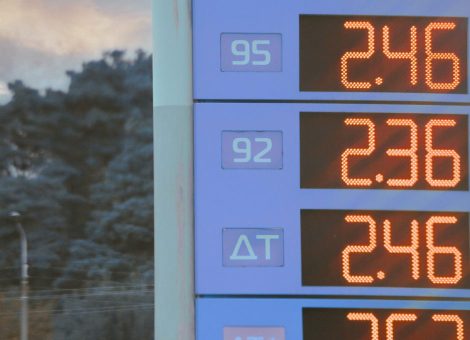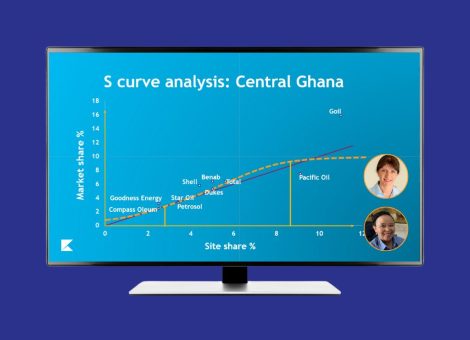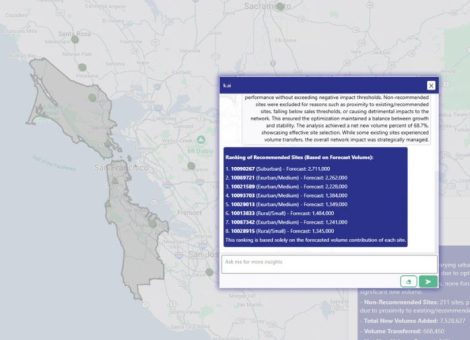Fuel industry predictions for 2023: price, inflation and EV adoption
As we reach the end of a volatile year in the fuel industry, there are still many questions about what we can expect in the new year. We have sat down with some of our fuel industry experts at Kalibrate to get their 2023 fuel industry predictions for what we can expect in the year ahead.
Prices are expected to be the big topic for 2023
Gasoline and Diesel prices are determined by a multitude of factors, and so to predict what will happen to prices, it is necessary to look at some of those key factors:
Supply constraints
Supply has already been impacted by low levels of inventory globally – there has been a lower production in part due to labor strikes in Europe. What happens next is difficult to predict as the EU embargo on Russian products, and the oil price cap begin in early 2023 – the goal of these measures is to lower prices, however there are reports that Russia has already circumvented the oil price cap.
OPEC+ Production levels
OPEC+ is unlikely to increase production levels – especially if price drops get any traction. Many investors are apprehensive of this fall in demand, ahead of a key meeting with the Organization of the Petroleum Exporting Countries (OPEC) and allies including Russia, known as OPEC+, on Dec. 4.
US oil prices have seen positive signs in recent weeks, but we still expect volatility in the market due to uncertainty around EU sanctions and a price cap on Russian oil – in an attempt to limit the revenue Russia is able to use to fund ongoing military action in Ukraine. Expect more clarity in December, once the OPEC+ meeting has taken place and the price cap has come into effect.
In any case, fuel retailers with a strong data environment and the ability to quickly react to increased volatility are better equipped for what is to come.
Demand
Currently demand is projected to grow by around 1.5-2% (although growth forecasts have been revised down over recent months), but high diesel prices throughout H2 2022 may be contributing to even lower growth in 2023 and some experts are predicting an inevitability to diesel demand destruction.
Kalibrate’s Paul Pasco commented on the recent trends in the industry, and what we can expect in the future. “Refinery outages that we’ve been talking about for the last two months that have kept prices higher on the west coast have finally started to come back on and now we’re seeing the price benefit. The demand on the diesel market right now is so high that diesel just isn’t seeing the same relief that gas is and there’s no end to it in the immediate future.”
Geopolitical outlook
As the media headlines swing between optimistic prospects of an end to Russian hostilities in Ukraine and the fears of nuclear war, uncertainty remains the only certainty.
However, for many in the fuel industry, geopolitical instability is now priced in – barring a major event, we do not expect to see product cost spike the way it has in 2022. In particular, for Europe, governments and oil majors have taken action to improve their stockage capacity. For fuel retailers, optimizing their performance for overall profitability can be achieved by analyzing the relationship between gas and convenience sales.
Kalibrate’s Tom Hatton reflected on the coming year:
“Exchange rates for those of us outside of the US will be a large part of the uncertainty – the USD has generally been on a trend of rallying for some time and is expected to slow/stop at some point – but when? Better economists than me don’t know the answer to this one – but I wouldn’t bet on a significant fall back.
“Notably the World Bank have said that they expect prices to fall by 11% in 2023 so I am bucking the trend by predicting that diesel prices will fall by a small amount, before stabilising – likely as a result of a response by OPEC+. I expect gasoline prices to hold, and then climb slightly – also as a result of an OPEC response.”
Consumers are going to be more price-sensitive
Bargain hunting is on the rise. Globally, we are seeing the beginnings of recessions and, as a result, we are seeing layoffs and hiring freezes across many sectors. When combined with higher heating costs and a higher cost of living, we would expect consumers to be a lot more mindful about their fuel consumption, particularly in the first half of the year. If you’re wondering what data you should be looking at when assessing your market’s fuel pricing sensitivity, the Kalibrate team have created this resource.
According to research from YouGov Global, markets like Germany, Brazil and Mexico are most likely to compare prices to inform their purchasing decisions. In the USA, around 62% of consumers compare prices before refuelling, so retailers will be expected to compete on price amongst their local competitors to a greater extent in 2023 and beyond.
Fuel retailers will need to have the capability to understand and react to changes in their customers’ purchasing behaviour in order to capture and retain loyalty. Visibility into the micro-market competitive landscape will also be a key differentiator – this will require a mature team with access to relevant data.
“Bargain hunters” are already a significant customer segment, and with comparative pricing data becoming more easily available, we expect people to be less loyal and shop around more.
EV adoption set to grow in 2023 and beyond
With the state of California – a leader in the adoption of electric vehicles in the US – announcing plans for all vehicles sales to be zero-emission by 2035, it is becoming clearer that fuel retailers, in the US and globally, cannot ignore the issue. The phased approach to the plan means that by 2026, 35% of new vehicles must be zero-emission, rising to 68% in 2030 and, finally, all vehicles will be expected to comply by 2035.
Around 17 further states – including Massachusetts, New York, and Oregon – have adopted the measures first introduced by California, which is expected to drive EV adoption in the US market. However, there are currently legal challenges to these proposals, so we’ll continue to monitor the market over the coming months and years.
Carbon neutrality (net zero) is a stated goal for many businesses, cities, countries and international organisations across the world. A lot of change is therefore required to achieve this goal, and these changes are being implemented through lots of different initiatives.
Diesel cars are disappearing gradually. You only need to look at EU new car registrations, which have plummeted to just 4.8% market-share throughout last year (2021), and that was down from 11.9% in 2020. Remarkably, the year before that – in 2019 – diesel sales comprised over a quarter of all new car sales!
Leaders in the EV space (those with a clearly defined strategy and are prepared to adapt to emerging trends) have seen an average year-on-year revenue growth of 7% over the past financial year, according to Kalibrate’s own research. What truly sets the leaders apart from other organizations is their use of data – around 52% utilize first party data from sites and 67% make use of third-party data to inform and optimize their location strategy.
Adopting a strategy that considers the electric vehicle market will only become more crucial in 2023 and beyond. Kalibrate have undertaken extensive research in this field, you can read the key results here.
How can Fuel Pricing teams prepare for 2023?
There are several things that Fuel Pricing teams need to consider when creating their strategies for 2023. With an expectation that prices will rise, and margins may drop, fuel can’t be relied upon to be the only profit driver.
Many retailers think price is the only lever to pull to drive volume. But there are several other elements, from forecourt to in-store, that can influence a customer’s decision to make a purchase.
By considering the role of each element in your planning and pricing strategy, you can understand what allows you to be a premium pricer or a budget retailer. Analyzing elements like facilities, operations or location can help you understand brand and competitor strengths and weaknesses as they relate to your own site.
This ability to benchmark key fuel and retail elements in each trade area will inform your strategy and drive maximum site profitability.
Every service you offer, and every product you sell impacts how your customers interact with you and what they spend. Understanding that on a holistic level for your entire site will help to set your 2023 strategy — and increase your profitability.
It’s never necessarily a one-way street from forecourt to in-store. Gathering the data required to understand which of your stores are store-led and which are fuel-led can be complicated if you don’t have the right tools.
If your fuel market is influencing your stores, which attributes of the store does it influence? Is it tobacco, candy or health food? With the right planning tool, you can gain insight into these kinds of questions and use those insights to adjust your pricing tactics.
Getting the right product mix is imperative to success. Different types of customers require different types of products and services, and particularly in the convenience industry — if you can get it just right, give them what they need and increase the convenience they get from your store — you’ll reap the rewards.
Demographic data that can pinpoint in-store visitors can be used to increase the understanding of your customer profile. And in a world where consumer behavior shifts quickly — the importance of understanding who you serve, why they chose you, and what else they desire, can’t be overlooked.
If every one of your fuel customers comes into the store to buy additional items, and you increase fuel prices and drive them away – you’ll not only lose your fuel customer but miss out on those high dollars inside sales too – negatively affecting your overall profitability.
Optimizing prices for fuel margin is no longer something to be considered in isolation. A fully holistic view that considers the links between fuel sales and store sales, for each of your locations, will help set pricing strategies that use fuel pricing as a catalyst to increasing overall profitability.
Read more articles about:
Fuel pricingSubscribe and get the latest updates
You may unsubscribe from our mailing list at any time. To understand how and why we process your data, please see our Privacy & Cookies Policy
Related Resources
Fuel pricing
Fuel pricing by exception: When do analysts actually analyze?
Managing fuel prices can be time-consuming, especially when analysts spend much of their day on routine tasks....

Fuel pricing
Middle East / Africa - Fuel network planning: Critical insights
Join our team as we look at the key points of insight that fuel network planners need to consider when making...


